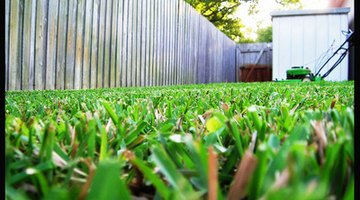How to Clean & Repair Carburetors on Briggs & Stratton Small Engines
A carburetor mixes fuel with air and sends that mixture into an engine to be ignited by a spark plug which drives the piston and produces the power output in an internal combustion engine.

Problems with the carburetor can manifest in many ways including the engine not starting, idling low, idling high, sputtering, dying, and producing black smoke exhaust. Proper carburetor cleaning and maintenance can solve many engine problems or shed light on the root cause of the issue.
Things You Will Need
- Carburetor cleaning spray
- Screwdrivers (cross-head and flat-head)
- Socket set
- Eye protection
-
Check the air-flow to the carburetor. Remove the air filter cover and the air filter cartridge. Look for dirt, debris and oil that may be clogging the air filter. Inspect the path from the filter into the carburetor for any blockages or dirt build up. Remove any foreign objects.
-
Clean the air filter with a shop vacuum or replace it with a new one. Spray carburetor cleaner on the metal parts inside the carburetor. Makes sure the choke plate and throttle move freely without sticking. Spray them with cleaner.
-
Remove the fuel line from the fuel tank and look for blockages in the line. Gently blow through the line (be careful to not swallow or inhale any of the fuel). If the fuel moves easily through the line there are no blockages. If you have to blow hard there are blockages. Flush out the fuel line by blowing the blockage out or replace it if you cannot dislodge the block.
-
Remove the spark plug and inspect the plug for charring or moisture. If the carburetor is running too rich (too much fuel in the fuel-air mixture) there may be moisture left around the spark plug. Charring indicates incomplete combustion due to too much air in the mixture.
-
Adjust the air-fuel mixture by turning the idle screw. First reassemble the engine fuel line, spark plug and air filter (if that won't impede your access to the idle screw). Turn the idle screw clockwise until the needle just touches the seat, then screw it counterclockwise between one and two turns. Start the engine and let it run for five minutes to warm up. Adjust the idle screw clockwise and counterclockwise until the engine starts to slow down (in each direction) then turn the screw back to the place in the middle. If you have a tachometer you can use it to test the speed of the engine. It should be rotate at 1750 RPM.
Tip
Use the carburetor troubleshooting guide (see Resources) to quickly identify the issue with your Briggs and Stratton carburetor.
The Drip Cap
- A carburetor mixes fuel with air and sends that mixture into an engine to be ignited by a spark plug which drives the piston and produces the power output in an internal combustion engine.
- Look for dirt, debris and oil that may be clogging the air filter.
- Remove any foreign objects.
- If you have to blow hard there are blockages.
- Adjust the air-fuel mixture by turning the idle screw.
- First reassemble the engine fuel line, spark plug and air filter (if that won't impede your access to the idle screw).
Writer Bio
James T Wood is a teacher, blogger and author. Since 2009 he has published two books and numerous articles, both online and in print. His work experience has spanned the computer world, from sales and support to training and repair. He is also an accomplished public speaker and PowerPoint presenter.
Photo Credits
- fress cut grass image by Photography Freak from Fotolia.com
- fress cut grass image by Photography Freak from Fotolia.com
More Articles



